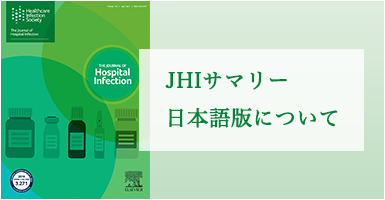抗菌薬耐性菌、酵母菌、アスペルギルス(Aspergillus)属、ヒトコロナウイルスの不活化のための双極イオン化装置の評価
Evaluation of a bipolar ionization device in inactivation of antimicrobial-resistant bacteria, yeast, Aspergillus spp. and human coronavirus I. Kanesaka*, A.K. Katsuse, H. Takahashi, I. Kobayashi *Toho University, Japan Journal of Hospital Infection (2022) 126, 16-20
背景
医療施設における双極イオン化(bipolar ionization)の有効性はまだ立証されていない。業界により資金援助を受ける研究には、オゾン濃度が適切に制御されない試験チャンバー内で有効性を評価するという大きな制約がある。
目的
オゾンの影響を低減するようにデザインされた制御試験チャンバー内での抗菌薬耐性菌、酵母菌、ヒトコロナウイルスに対する双極イオン化の有効性を評価すること。
方法
細菌および酵母菌を播種したガーゼと、ヒトコロナウイルス 229E を播種したステンレス鋼板を AIO-2 双極イオン化装置の近傍に置き、室温で放置した(コロナウイルス 2 時間、細菌・酵母菌 4 時間)。
結果
双極イオン化への 4 時間曝露によって、クロストリジオイデス・ディフィシル(Clostridioides difficile)、肺炎桿菌(Klebsiella pneumoniae)カルバペネマーゼ産生 K. pneumoniae、メチシリン耐性黄色ブドウ球菌(Staphylococcus aureus)、多剤耐性黄色ブドウ球菌が 1.23 ~ 4.76 log 減少し、ガーゼ当たりのコロニー形成単位(cfu)94.2 ~> 99.9%の減少に相当した。2 時間曝露によって、ヒトコロナウイルスは 50%組織培養感染量の 1.2 log の減少が観察された。
結論
感染制御策として双極イオン化システムは、さらなる試験で評価する価値がある。
監訳者コメント:
なし
同カテゴリの記事
Infections acquired in intensive care units: results of national surveillance in Belgium, 1997-2010
Acquisition and retention of Clostridium difficile by Musca domestica larvae and pupae during metamorphosis
Point prevalence study of antimicrobial usage in acute care hospitals in the Slovak Republic
Active surveillance cultures: comparison of inguinal and rectal sites for detection of multidrug-resistant bacteria
Thermostable adenylate kinase technology: a new process indicator and its use as a validation tool for the reprocessing of surgical instruments
サイト内検索
アーカイブ
-
2024年
- ・ 1月(24)



